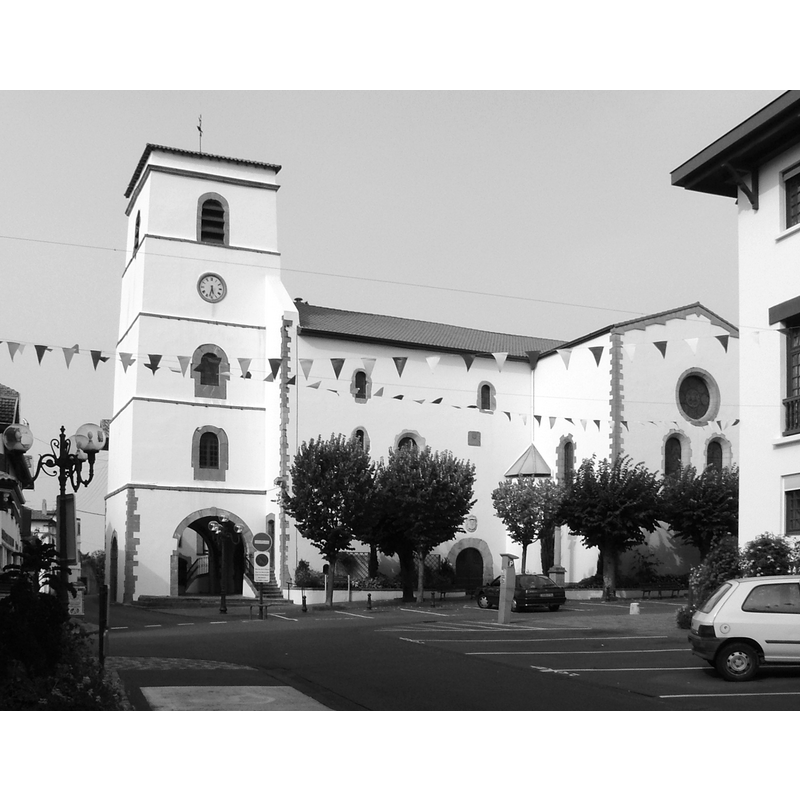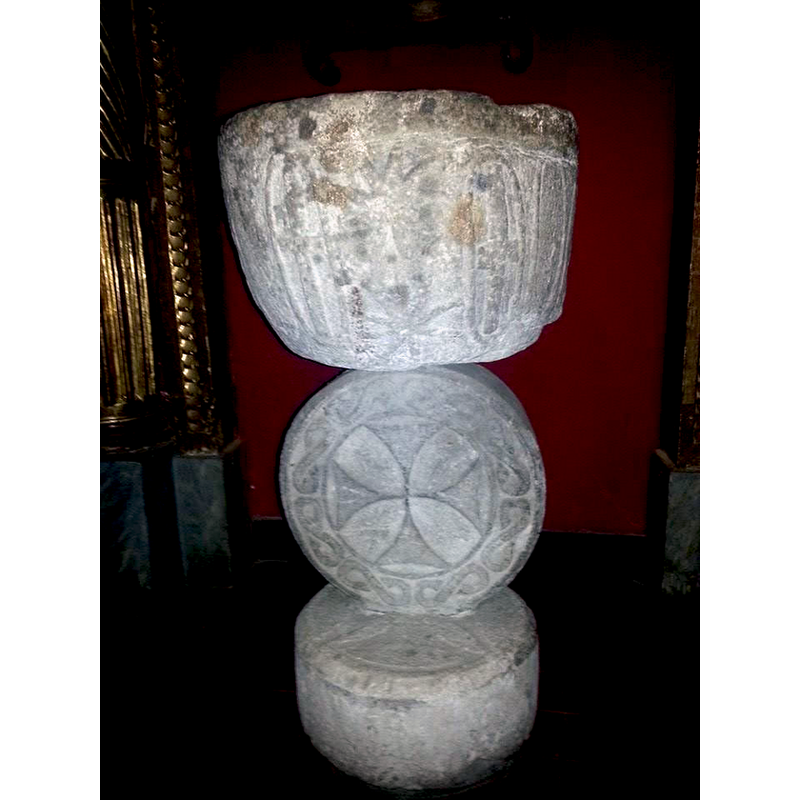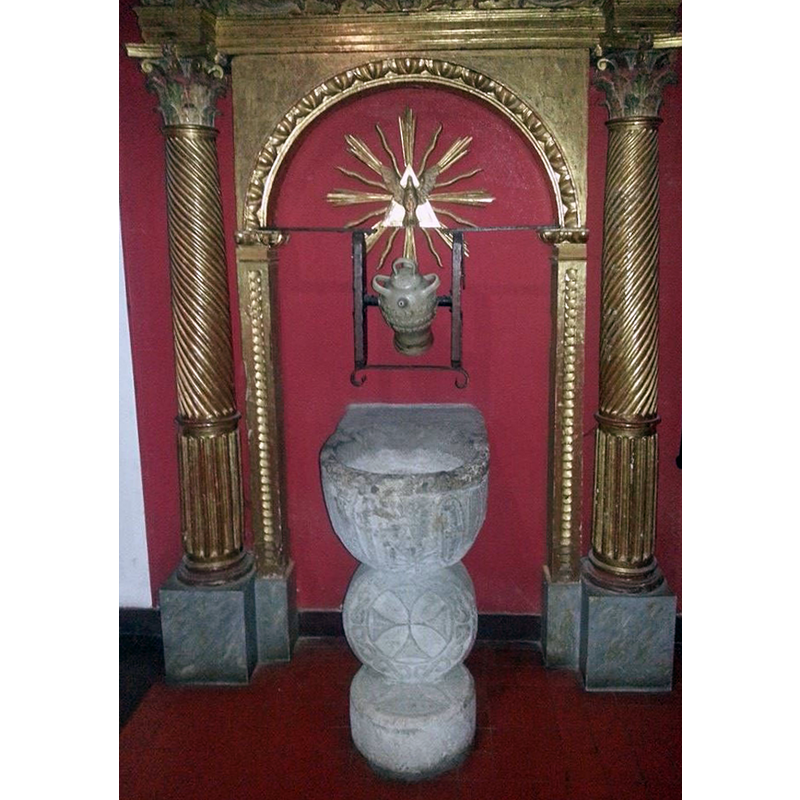Hendaye No. 1
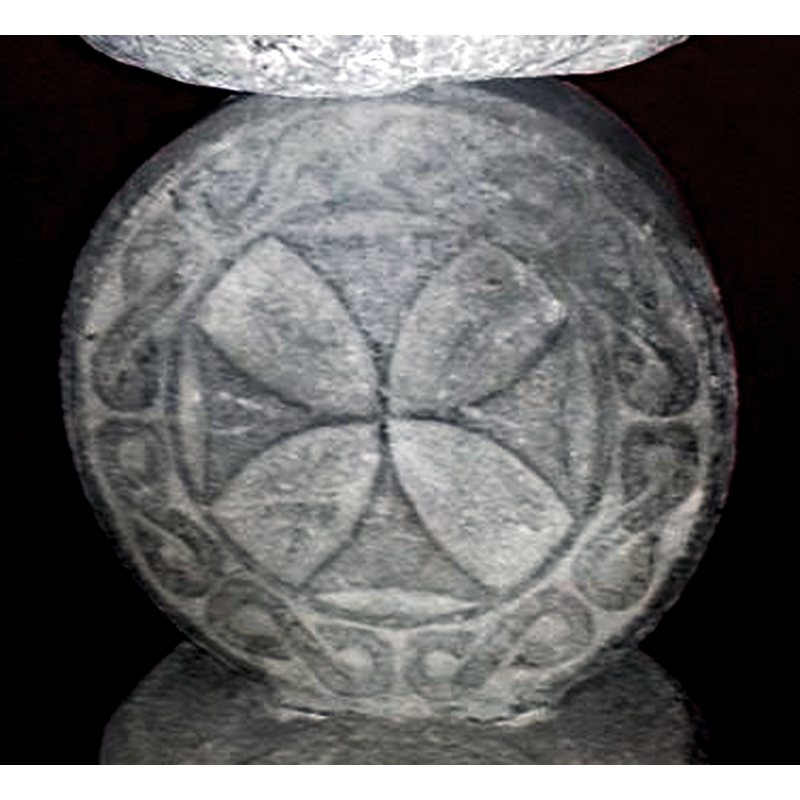
Image copyright © Josu Fernández Villaverde, 2015
Image and permission received via Mikel Unanue (e-mail of 4 March 2015)
Results: 9 records
design element - motifs - interlace - 8-shaped
Scene Description: all around the Maltese cross; the piece may have been originally a funeral stone
Copyright Statement: Image copyright © Josu Fernández Villaverde, 2015
Image Source: edited detail of a digital photograph taken by Josu Fernández Villaverde
Copyright Instructions: Image and permission received via Mikel Unanue (e-mail of 4 March 2015)
design element - motifs - leaf - lanceolated - 4?
Scene Description: on the upper surface of the cheese-shaped lower base
Copyright Statement: Image copyright © Josu Fernández Villaverde, 2015
Image Source: edited detail of a digital photograph taken by Josu Fernández Villaverde
Copyright Instructions: Image and permission received via Mikel Unanue (e-mail of 4 March 2015)
symbol - cross - Greek - Maltese - in a circle
Scene Description: on the round piece that serves as stem or upper base [originally an unrelated objetct]
Copyright Statement: Image copyright © Josu Fernández Villaverde, 2015
Image Source: edited detail of a digital photograph taken by Josu Fernández Villaverde
Copyright Instructions: Image and permission received via Mikel Unanue (e-mail of 4 March 2015)
symbol - cross - in an oval
symbol - cross - swastika - round arms
symbol - star or sun - 2
Scene Description: on the front, one-up-one-down
Copyright Statement: Image copyright © Josu Fernández Villaverde, 2015
Image Source: edited detail of a digital photograph taken by Josu Fernández Villaverde
Copyright Instructions: Image and permission received via Mikel Unanue (e-mail of 4 March 2015)
view of church exterior in context
view of stoup
view of stoup in context
Scene Description: a real montage involving a ceramic 'botijo' perched on a trapeze above the basin; it probably holds holy-water in it, which can be 'decanted' into the stoup; the stoup itself appears to be a composite object made of a round tapering basin precariously balanced on two cheese-shaped volumes that make up the base
Copyright Statement: Image copyright © Josu Fernández Villaverde, 2015
Image Source: digital photograph taken by Josu Fernández Villaverde
Copyright Instructions: Image and permission received via Mikel Unanue (e-mail of 4 March 2015)
INFORMATION
FontID: 03691HEN
Object Type: Stoup
Church/Chapel: Now at the Eglise Saint-Vincent's, Hendaye (orig. at the priory/hospital of Saint-Jacques de Zubernoa)
Church Location: rue de l'Eglise, 64700 Hendaye, France -- Tel.: 0559543115
Country Name: France
Location: Pyrénées-Atlantiques, Nouvelle-Aquitaine
Directions to Site: On the "corniche Basque", N the Spanish border (Behobie-Behobia-Irun).
Ecclesiastic Region: Diocèse de Bayonne
Historical Region: Pays-Basque
Font Location in Church: In its own small "baptistery"
Century and Period: 13th - 14th century [basin only] [composite font], Medieval [composite]
Church Notes: The church is 16thC; it has a baptismal font listed for this church in the Index [cf. Hendaye No. 2]
Font Notes:
Click to view
The holy-water stoup at Saint-Vincent's is a real montage involving a ceramic 'botijo' perched on a trapeze above the basin; it probably holds holy-water in it, which can be 'decanted' into the stoup; the stoup itself appears to be a composite object made of a round tapering basin precariously balanced on two cheese-shaped volumes that make up the base. The basin of this object is a medieval water stoup, oblong but the outer side rounded, the inner embeded in the wall, ornamented on one side with the Basque "lauburu" [a cross of "legged" arms, on the same basis as the svastika but with rounded arms which run the opposite way - "lau buru" = four heads]. It is now placed in the parish church of St-Vincent, wall-mounted on one side while the other rests on a round "stelle" which bears the Maltese cross; the whole is framed in a rather bizarre Baroque canopy which includes an earthenware pitcher ["cruche"] and a radiated motif that looks like a splatter on the background. The Hendaye historian l'abbé M. Michelena reports that this stoup had originally served the same function in the ancient prieuré/hôpital de Sant-Jayme (St-Jacques) [now disappeared] located in Zubernoa/Zoubernoa, on the banks of the Bidassoa/Bidasoa river; this priory/hospital was known in existence long before 1305. (Michelena, 1997: 33-34 and p. 227)
MEDIUM AND MEASUREMENTS
Material: stone, unknown
Font Shape: cylindrical (wall-mounted)
Basin Exterior Shape: round
REFERENCES
Michelena, M. (abbé), Hendaye: son histoire, Hendaye: Éditions de Mondarrain, 1997
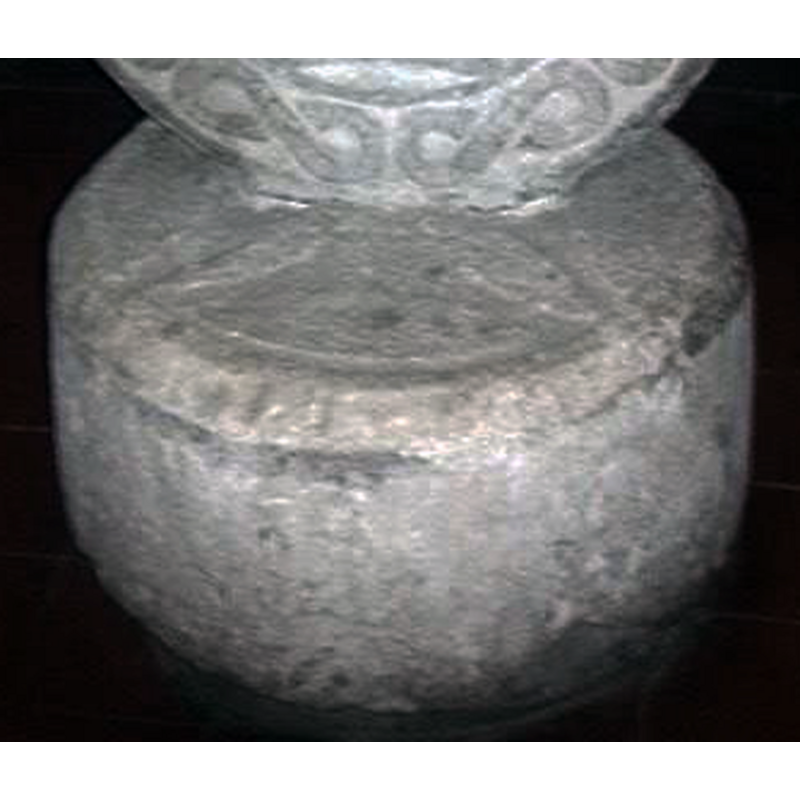

![a symbol tradiitionally used in stellae, etc., in the Basque region [lau buru = four heads]](/static-50478a99ec6f36a15d6234548c59f63da52304e5/others/image_not_available.jpg)
![a symbol tradiitionally used in stellae, etc., in the Basque region [lau buru = four heads]](/static-50478a99ec6f36a15d6234548c59f63da52304e5/bsi-testing-site/others/image_not_available.jpg)
